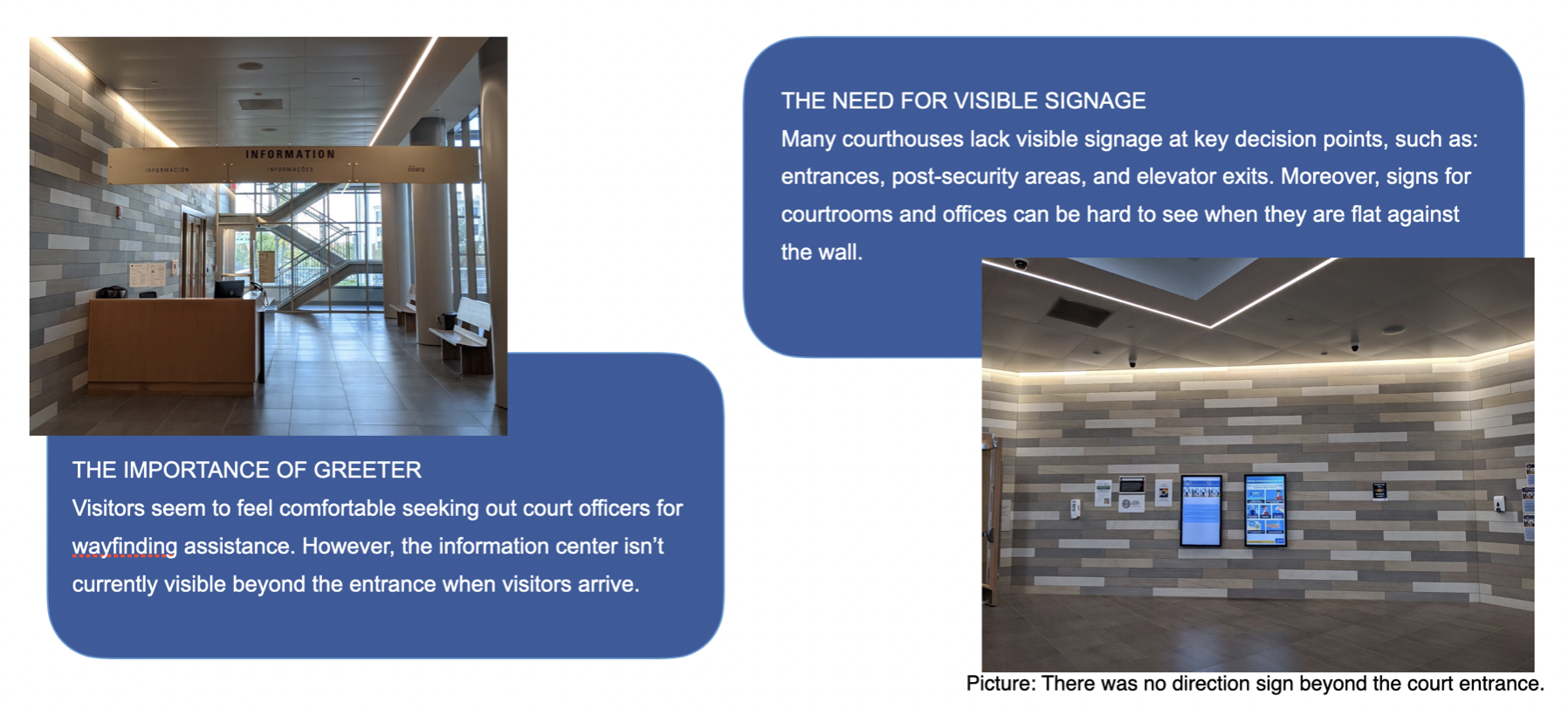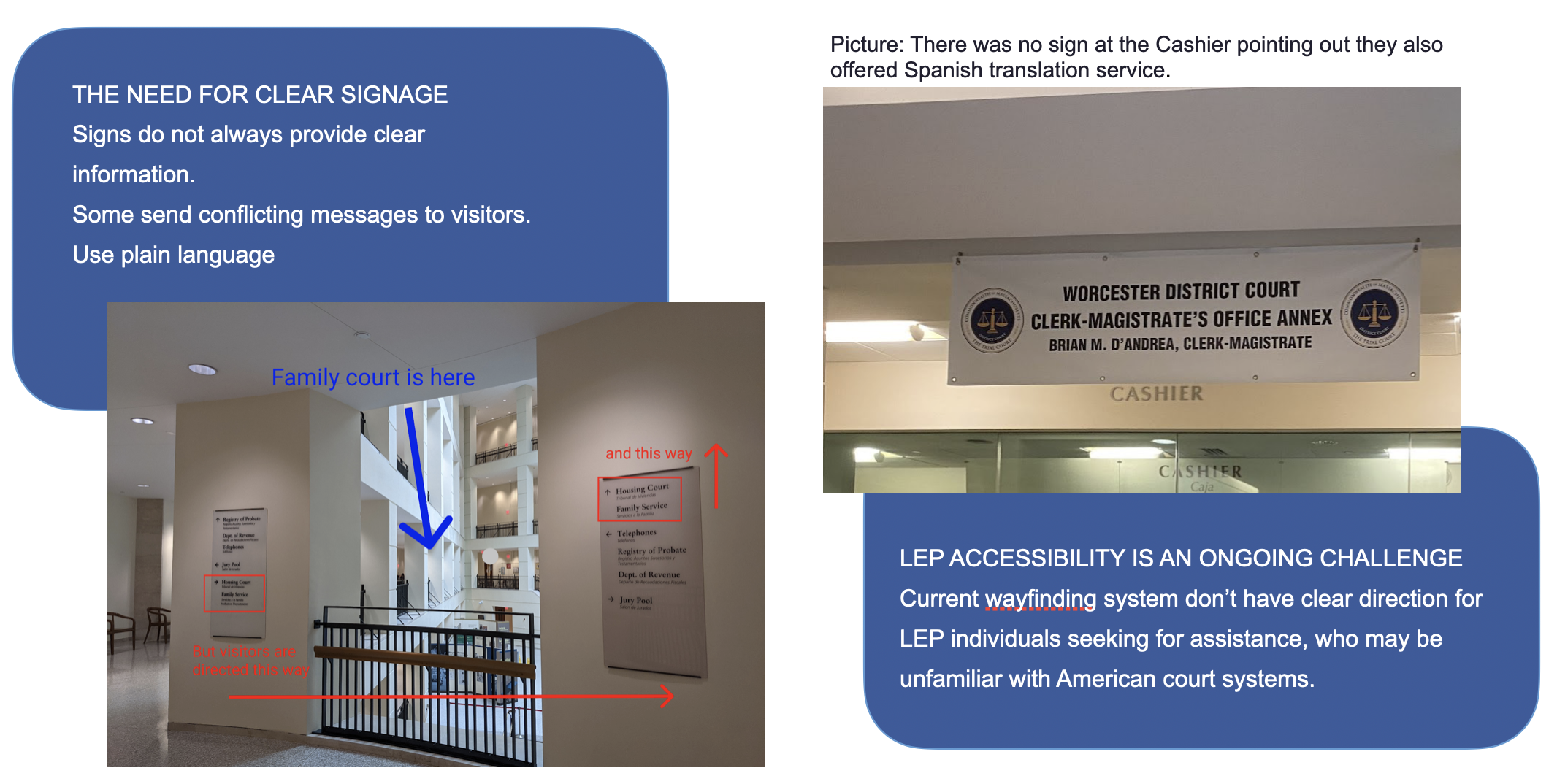Wayfinding Experience of the Massachusetts Court System
Massachusetts courthouses provide law services for the public, where visitors usually feel stress. Based on the previous study, good wayfinding design could improve the user experience in the court system. The goal of the project was to understand the user experience of the current wayfinding design system.
The study was executed through a series of observations, individual interviews, and shadowing to study user behaviors and perspectives toward the wayfinding system in the courthouses. With data from nine courthouses, our research identified potential pain points and proposed corresponding recommendations.
Project Time: 2021
MyRole: UX researcher (Team of 6)
Methods used: Observation, Individual interview, Table shadowing
Challenges
Courthouses are part of a public system that serves a wide range of people such as those who are unfamiliar with the legal system, those with varying levels of English fluency and literacy. Visitors come into the courts with some level of stress, and studies have shown that stress inhibits people’s navigational skills.
A wayfinding system is especially critical in guiding users through the courthouse.This study focused on the user experience for Limited English Proficiency (LEP) litigants, improving the user experience for others by extension.
In this context, Massachusetts courthouses sponsored the field research class and asked us to review the current wayfinding system and visitors’ experience.
Goals
Gain an understanding of user experience in the current wayfinding system.
Identify opportunities for improving wayfinding experience.
Explore potential solutions for the current pain points.
My role
My role during this project was as a UX researcher on a team of six. I was involved in each stage of the process, which included:
Literature Research
Observations (5 out of 9)
Interviews ( 1 out of 5)
Shadowing ( 1 out of 3)
Data analysis
Presentation to the sponsor
Process
We executed qualitative field research on the wayfinding experience in Massachusetts courthouses. The process included:
Main Findings
Below are the foremost findings regarding wayfinding during the Massachusetts courthouses visit.
Results and Takeaways
According to the findings, we proposed several recommendations to improve the wayfinding system of courthouses. The project produced a detailed report and a slide deck presented to the representatives from the Massachusetts Court System on December 22, 2021, with a total of 30 employees participating in it. From the sponsor's feedback, this report triggered a lot of discussion among court staff.
“There was discussion about the new multiplex courthouses just built two years ago, and a focus on some of the photos that you included. Most people assumed (incorrectly as it turned out), that it was designed well and everything was great.”
— Sponsor
By implementing various field research methods, I practiced communication and critical thinking. This experience enhanced my analysis and research abilities when studying public services and products.
If I had more time to keep working on the project, I would be interested to focus on the behaviors of visitors with physical disabilities in the current wayfinding system. Also, I would like to hold workshops for courthouse employees to learn more about their perspectives and ideas on the wayfinding system.




